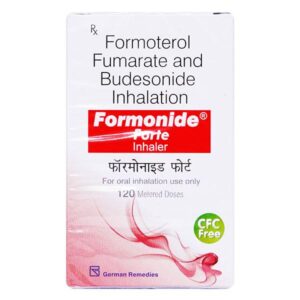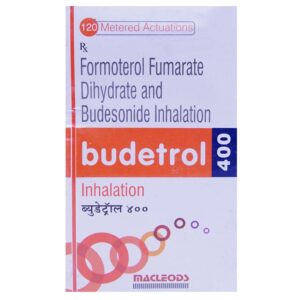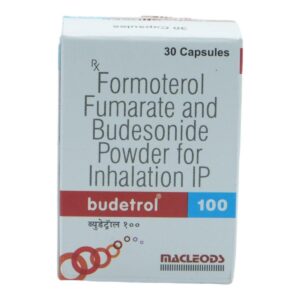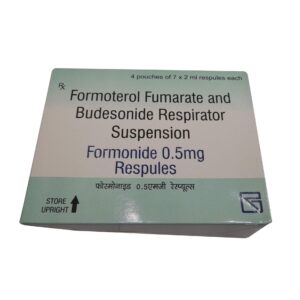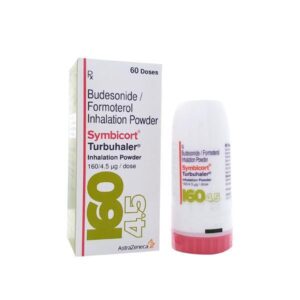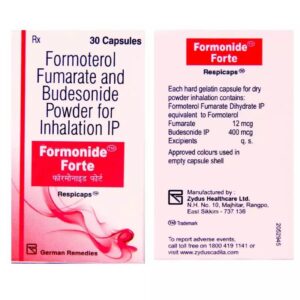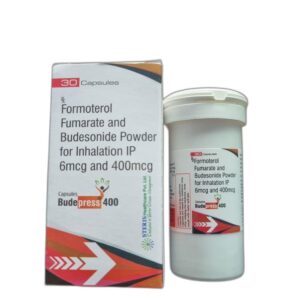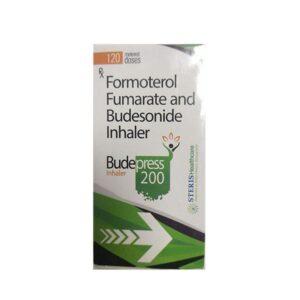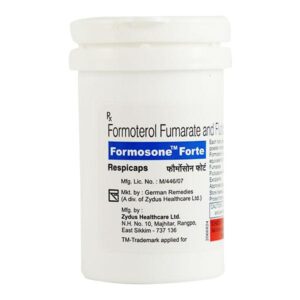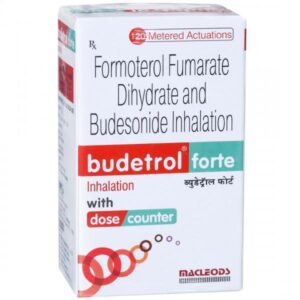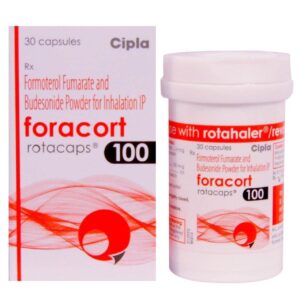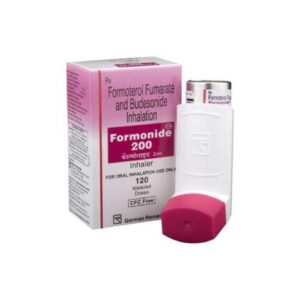BUDESONIDE + FORMOTEROL
Budesonide: Budesonide is a corticosteroid drug that is primarily used to treat inflammatory conditions in the body. It is available in various forms such as inhalers, nasal sprays, and oral capsules.
The drug works by reducing inflammation in the body by inhibiting the release of certain chemicals that cause inflammation. It acts locally, reducing inflammation in the airways or nasal passages without having significant systemic effects that other corticosteroids might have.
The dosage and duration of treatment with budesonide depend on the specific condition being treated and the form of the drug being used. For asthma, the usual dose is 1-2 puffs of the inhaler twice daily. For allergic rhinitis, the typical dose is 1-2 sprays in each nostril once daily. The oral form of budesonide may be prescribed for inflammatory bowel disease, and the dosage varies depending on the severity of the condition.
Like any medication, budesonide may have some side effects. Common side effects include headache, sore throat, hoarseness, dry mouth, nasal congestion, and nosebleeds when using the nasal spray form. When used as an inhaler, it may cause cough, oral thrush (yeast infection), and voice changes. When taken orally, it may cause abdominal pain, diarrhea, and nausea.
It is important to note that the side effects of budesonide may vary depending on the form of the drug and individual patient factors. It is recommended to use budesonide at the lowest effective dose for the shortest possible duration to minimize the risk of side effects. Additionally, it is essential to follow the prescribed dosage and consult a healthcare professional if any severe or persistent side effects occur.
Formoterol: Formoterol is a long-acting bronchodilator medication primarily used for the treatment of asthma and chronic obstructive pulmonary disease (COPD). It belongs to the class of drugs known as beta-2 agonists.
Formoterol works by stimulating the beta-2 adrenergic receptors in the smooth muscles of the airways, leading to their relaxation and thus dilating and opening up the air passages. This mechanism of action helps in relieving symptoms such as wheezing, shortness of breath, and coughing.
The drug is available in inhalation form, either as a dry powder inhaler or a metered-dose inhaler. It should be used as prescribed by a healthcare professional and not more often than recommended.
The usual recommended dose of Formoterol depends on the condition being treated. For asthma, the typical starting dose is one inhalation (12 mcg) twice daily. However, the dose may vary based on the severity and individual response. For COPD, the usual dose is one inhalation (12 mcg) twice daily.
Like all medications, Formoterol can cause side effects. Common side effects include tremor, headache, nervousness, dizziness, heart palpitations, throat irritation, and muscle cramps. These side effects are usually mild and temporary. However, if they persist or worsen, it is important to consult a healthcare professional.
Serious side effects are rare but can occur. These may include chest pain, rapid or irregular heartbeat, worsening breathing problems, and allergic reactions such as rash, itching, or swelling. If any of these serious side effects occur, immediate medical attention should be sought.
Formoterol should not be used as a rescue medication to treat sudden asthma or COPD symptoms. In such cases, a short-acting bronchodilator like salbutamol should be used. It is also important to note that Formoterol should not be used without a concomitant inhaled corticosteroid for the long-term control of asthma or COPD, as it does not substitute for the anti-inflammatory effects of corticosteroids.
It is important to follow the prescribed dosage, technique, and frequency of use for Formoterol and to consult with a healthcare professional for any concerns or questions about the medication.

